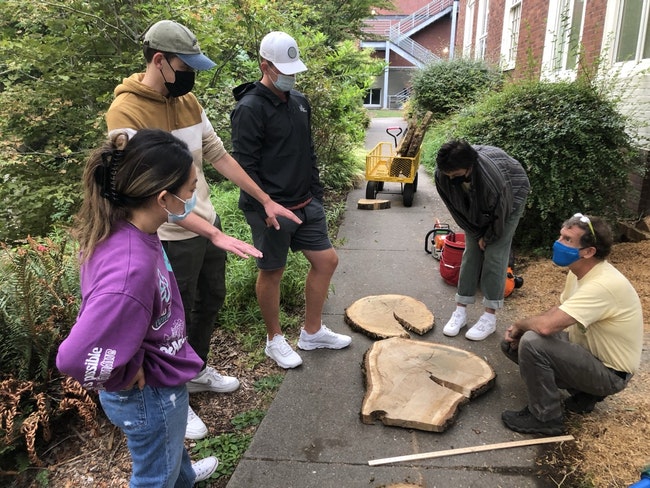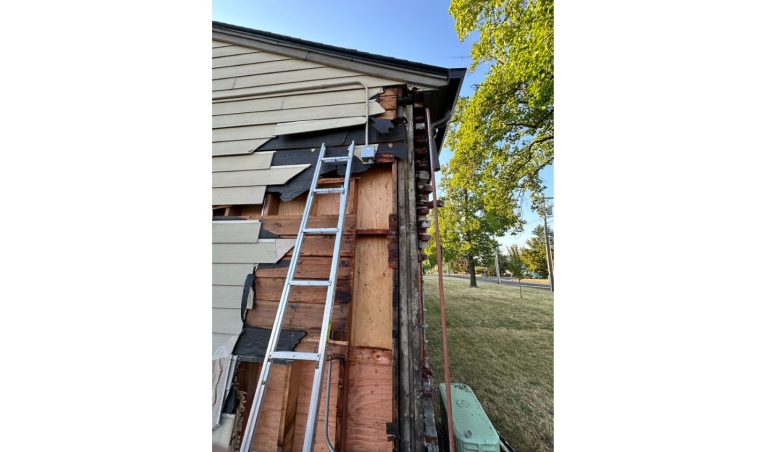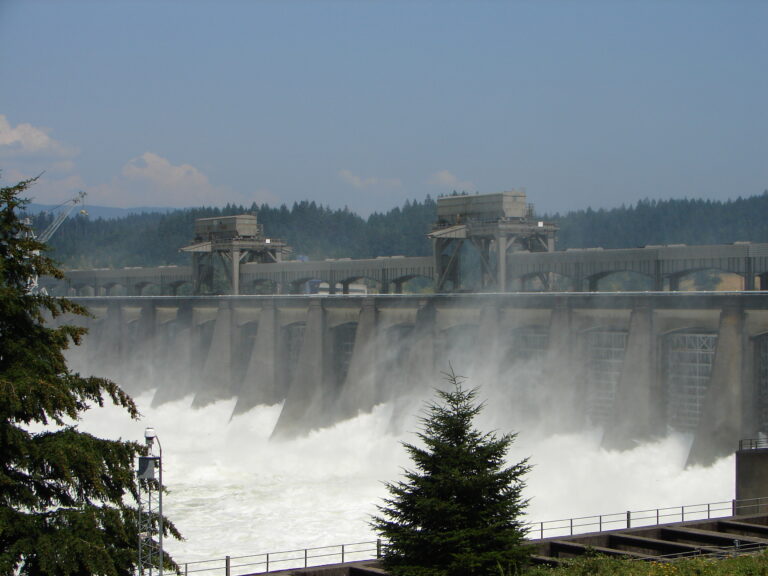
Willamette University students process oak tree core samples (Courtesy/Karen Arabas)
The Oregon white oaks on the steep hill next to the playground at Bush’s Pasture Park aren’t especially large.
But a sample from one of four on the hill that fell during Salem’s February 2021 ice storm yielded a surprise for researchers at Willamette University. The tree dated back to 1666.
“It was very deceiving. It didn’t look that old,” said Karen Arabas, a professor of environmental science.
Arabas is one of several Willamette researchers who, together with their students, are studying white oaks using “cookies” – cut trunk samples – from trees that fell during the ice storm. The project aims to make scientific use of the event that proved fatal for many native trees in the city.
Arabas worked with students in her dendrochronology class this fall to analyze samples. Dendrochronology is the scientific practice of using tree rings to date samples and analyze related events like climate and environmental impacts.
Arabas said the 350-year-old tree didn’t look much different than its younger counterparts. She and her students found that was often the case.
“One of the things we’re finding out is that the actual size or diameter of the oak tree does not correlate very well to its age,” Arabas said.
The research is still in its early stages since Arabas and fellow professors David Craig and Joe Bowersox announced the project in the days following the storm.
To date, the group has collected more than 200 oak samples from people around Salem who lost trees during the storm.
That includes more than a dozen from Bush’s Pasture Park, where city Horticulturalist Brian Smith has worked with Willamette researchers to help them obtain samples.
“To see one that old was pretty cool,” Smith said of the felled tree on the hillside.
Arabas’ students spent much of the fall focused on analyzing samples from the park and trying to establish a chronology.
Student Grace Shiffrin, a junior biology and environmental science double major, said students first learned how to read and analyze tree core samples.
Though there’s software that counts tree rings and records data, Shiffrin said the students also practiced by hand, looking under a microscope and counting from the bark to the core center, marking every 10 years with a pencil dot.
Many of the oaks in the park had a period of quick growth around the 1860s and 1870s, followed by a decline.
“We’re interpreting that as when the Bush family started to develop the land into a pasture and started to change the land so then the trees could increase their growth,” Shiffrin said.
 Damage from the ice storm hit hard at the trees around Bush’s Pasture Park. (Lorrie Walker photo)
Damage from the ice storm hit hard at the trees around Bush’s Pasture Park. (Lorrie Walker photo)
Arabas said that data will yield better insights into how European settlement impacted the iconic Oregon species which once covered most of the valley.
“It could be climate – we haven’t done that analysis yet. It could also be some clearing that happened,” Arabas said of the higher growth period. “We speculated on a number of things because the area was grazed so that would have kept competition down and given the trees that were there an opportunity to grow.”
They ultimately hope the project will yield a better understanding of the climate and ecology of the region, forest health and human impacts. They also want to better understandthe role Oregon oaks have played in the ecosystem.
Students will continue analysis in various classes in the spring.
Arabas said after she and Craig first asked the public for their help collecting white oak samples following the storm, the response was overwhelming.
“We need power tools and we need a giant space for all this!” she said of their early reactions.
Now, she and Shiffrin said they’ve been encouraged by the public response and interest in their work.
“I haven’t done anything of this magnitude where I got to go out and collect samples,” Shiffrin said.
Though she’s originally from Davis, California and had never heard of the white oak until coming to Willamette, Shiffrin said she’s interested in their ongoing conservation. She’s also learned to better communicate about science to people who are curious about the project.
“It’s just been such an amazing experience because field work is so important to so many,” she said.
Smith, the city horticulturalist, said he’s hopeful the project’s findings can help educate the public about the importance of the park’s trees.
“We normally wouldn’t be cutting down or losing so many white oaks at one time so I’m glad they’re doing something with it,” Smith said. “It would help us maybe tell the story why they’re important, why it’s important to protect the trees … A 300-year-old is a pretty important thing to have in the park.”
Contact reporter Rachel Alexander: [email protected] or 503-575-1241.
JUST THE FACTS, FOR SALEM – We report on your community with care and depth, fairness and accuracy. Get local news that matters to you. Subscribe to Salem Reporter starting at $5 a month. Click I want to subscribe!




